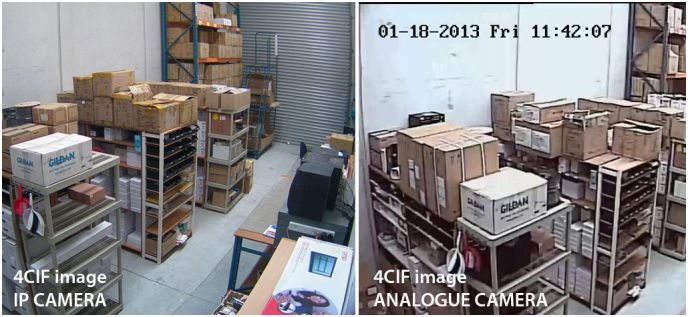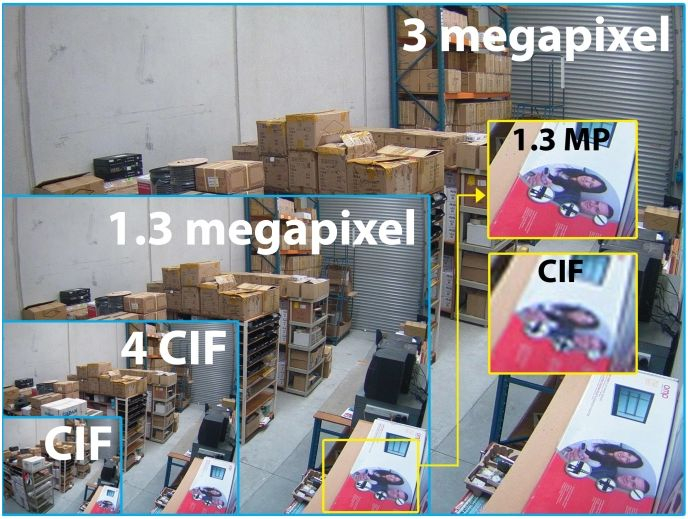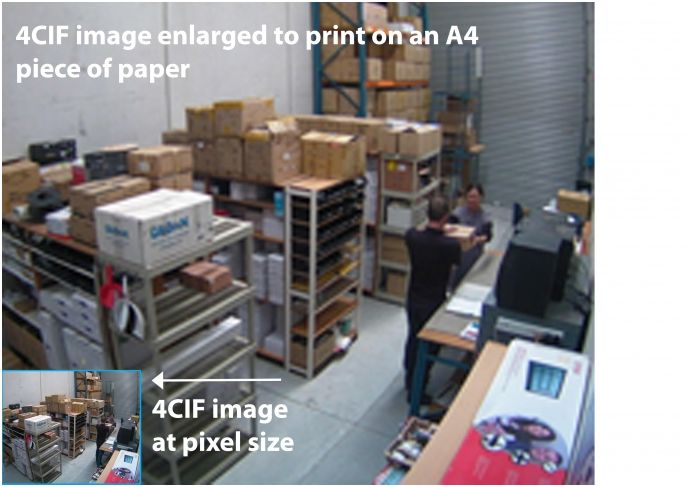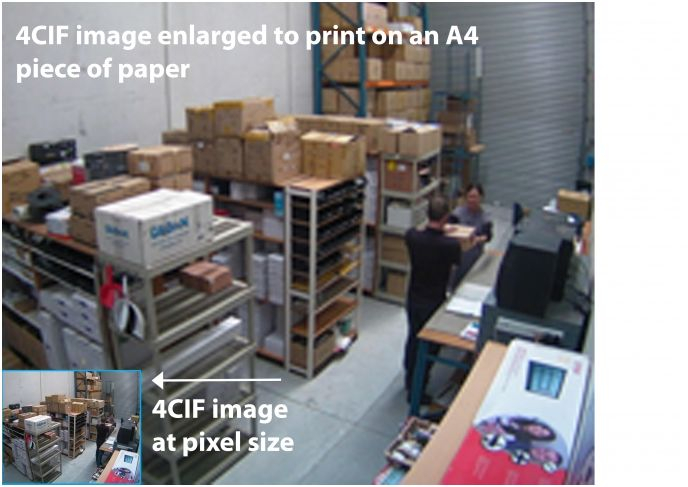Case Studies & News
Analogue versus IP camera resolutions
The single biggest difference between analogue and megapixel CCTV surveillance systems is the resolution (quality and size) of the footage and images recorded.
The maximum resolution that an analogue surveillance system can provide is limited to D1 resolution which is 720X576 pixels (PAL) or 0.4 megapixel. Even if a higher resolution camera (such as a 700 TVL camera with a 1020X596 pixel resolution) is used after the video signal has been digitized in a digital video recorder it will only display and record at D1 resolution.
The quality of the video recorded on an analogue system is further reduced by converting the digital camera image to analogue then back to digital. This creates a loss in overall picture quality when comparing an IP based system and an analogue system of the same resolution eg 4CIF or D1. You can see in the comparison below that the IP camera produces a better looking picture with more detail even though (according the manufacturer specs) the image sensors produce the same resolution image.
In comparison even a 1.3 megapixel CCTV camera gives a resolution of 1280X960 pixels which is more than three times the resolution than can be achieved from an analogue CCTV system. Network cameras with 2, 3, 4, 5, 8 or 12 megapixel resolution are common now with even higher resolutions being achieved all the time. A network video recorder can display and record whatever resolution image is provided by the IP camera.
So how does this translate to what you will actually see from recorded footage?
This image shows the difference in image size and quality from analogue cameras going into a digital video recorder (CIF and 4CIF) and megapixel cameras going into a network video recorder (1.3 and 3 megapixel). Note that not only is the image size different but when the image is zoomed there is a lot less pixel definition with the CIF image (see the yellow boxes).
For an example of what this actually means in the real world have a look at the two images below. Imagine you are wanting to identify the person that has collected the package from the workshop. We have captured a still from recorded footage from a 600 TVL analogue camera going into a DVR with 4CIF recording resolution then a 3 megapixel CCTV camera going into a network video recorder.
Each still has then been inserted on to an A4 piece of paper. The image at pixel size shows how big the image would print out without any enlargement. The enlarged image is then expanded to fill the A4 piece of paper as you would likely do to try and get more detail from the image. Note that with the analogue camera it would be very difficult to identify the person collecting the package unless that person was known to you. With the megapixel camera it would be possible to print off a clear picture of the person.
So in conclusion you will in most cases get a far superior image using an IP camera system over an analogue camera system. At present however, IP is now very nearly about the same price as analogue. If on the other hand you have a large open plan area or car park to cover then IP is far superior as you could reduce the number of cameras required by installing a high resolution system so the overall cost will be far better than an analogue system.






